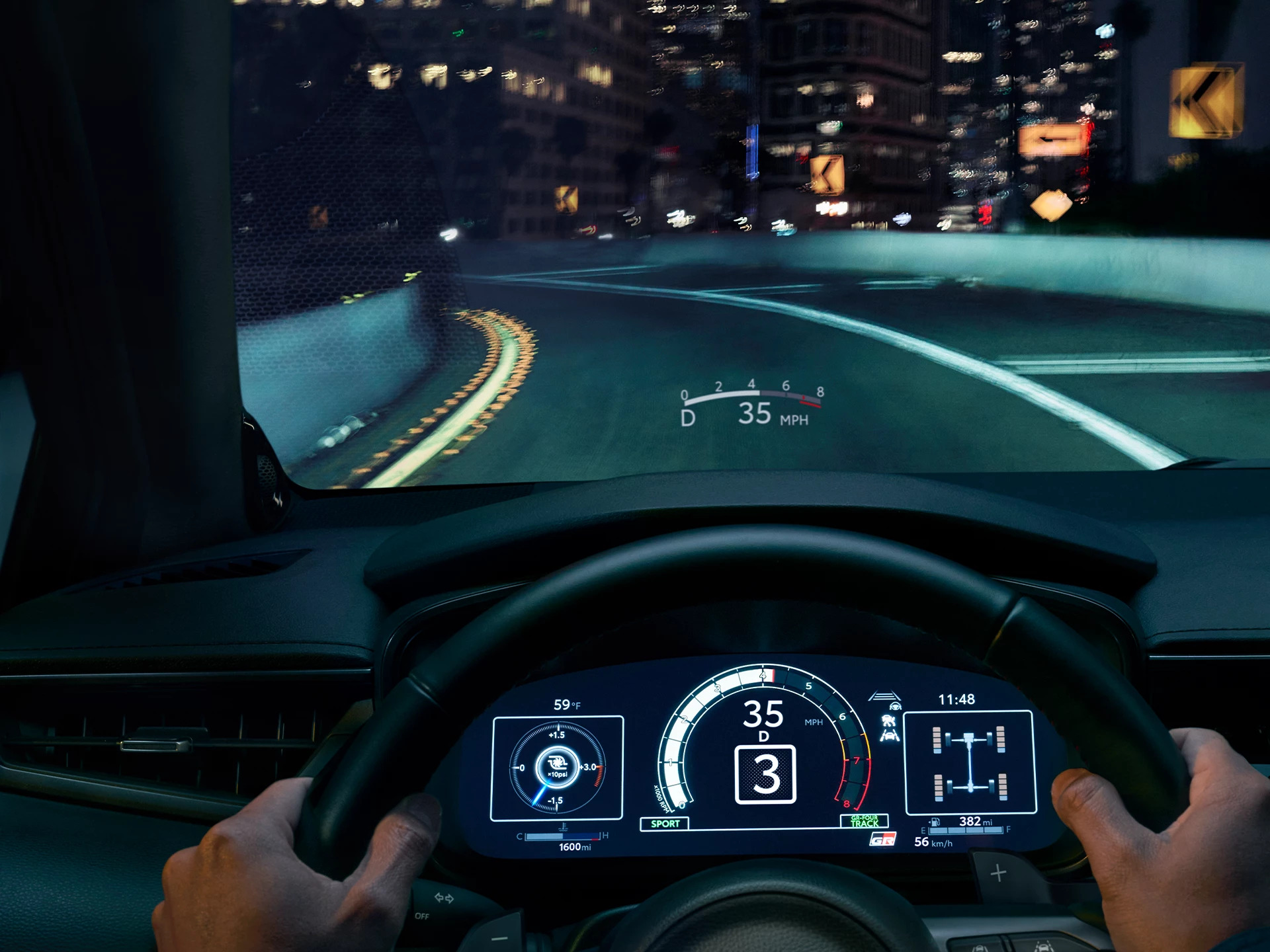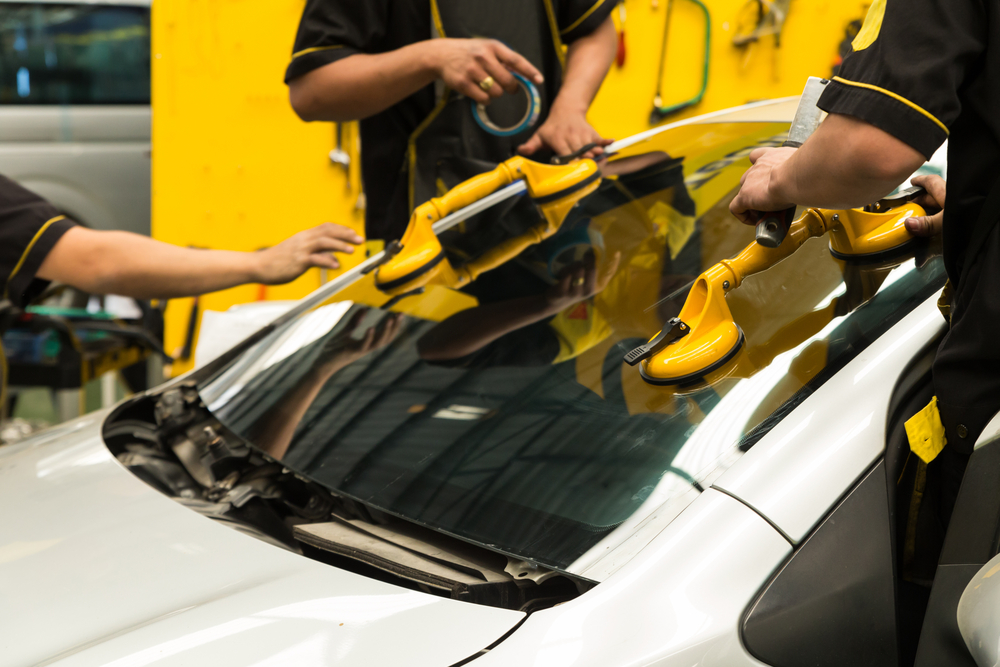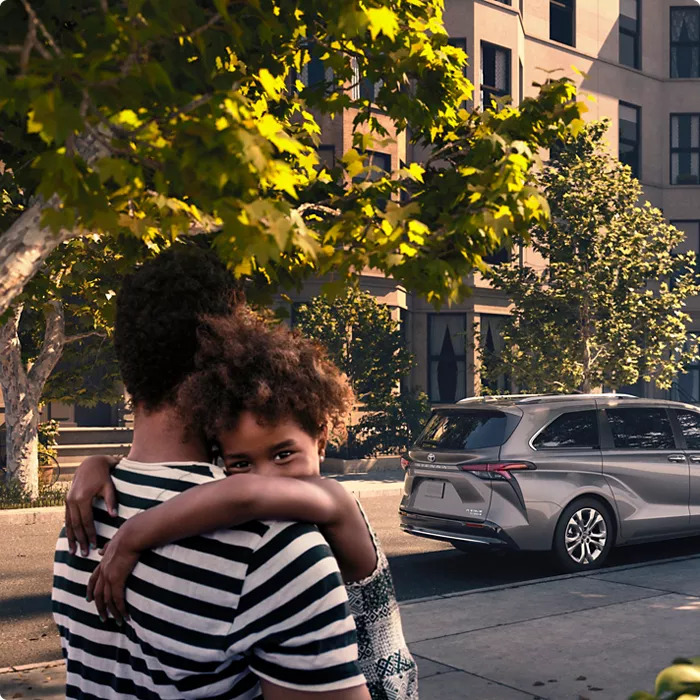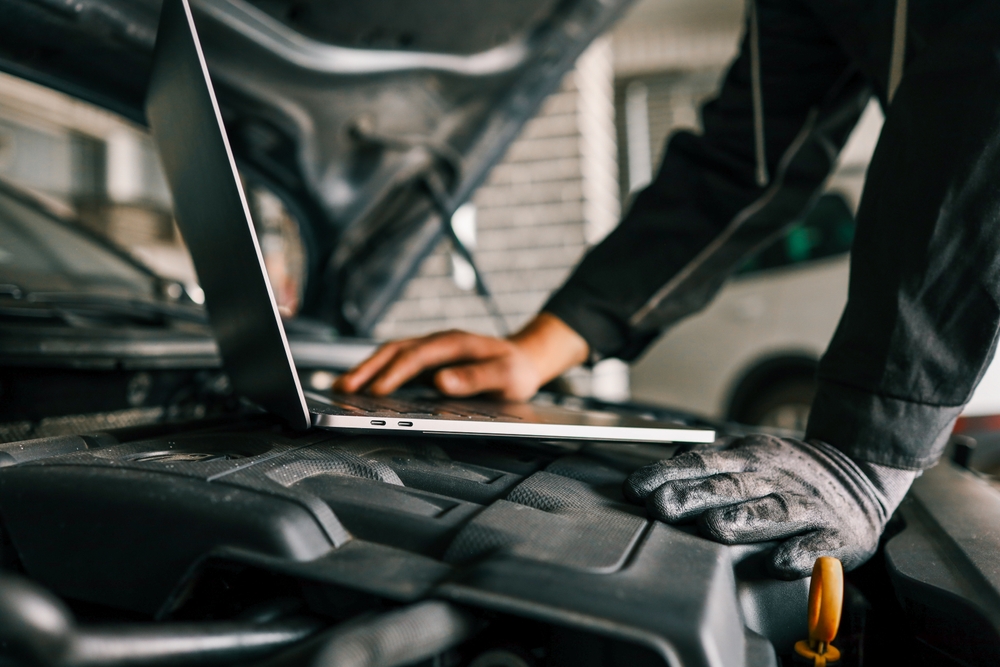If you’ve recently had your windshield replaced, been in a fender-bender, or noticed a warning light on your dashboard, there’s a critical service your Toyota might need that many Knoxville drivers don’t even know exists—Toyota Safety Sense calibration. Your vehicle’s advanced safety systems rely on cameras and radar sensors that need to be precisely aligned to work correctly, and even minor disruptions can throw them off. When these systems aren’t calibrated properly, features like Pre-Collision System with Pedestrian Detection, Lane Departure Alert, and Dynamic Radar Cruise Control can’t accurately “see” the road ahead, putting you and your family at risk on busy routes like I-40 or Alcoa Highway. Our certified Toyota technicians understand exactly what your Camry, RAV4, or Tundra needs to restore these systems to factory-perfect accuracy, ensuring every drive through West Knoxville or out to the Smokies is as safe as Toyota engineered it to be.
What is Toyota Safety Sense (TSS) Calibration?
Toyota Safety Sense calibration is the professional process of precisely realigning the forward-facing cameras and radar sensors that your Toyota’s safety systems depend on to monitor the road around you. Think of it like getting your eyes checked—if your glasses are slightly off, you can’t see clearly, and the same goes for your vehicle’s sensors. These sophisticated components are mounted in specific locations, typically behind your windshield and in your front grille, and they need to be calibrated to exact factory specifications to function correctly.
Several critical safety features rely entirely on this calibration working flawlessly. Your Pre-Collision System uses these sensors to detect potential frontal impacts and can automatically apply the brakes to help you avoid or reduce the severity of a collision—especially valuable during sudden stops on Chapman Highway during rush hour. Lane Departure Alert monitors road markings to warn you if you’re drifting out of your lane without signaling, perfect for those long drives on I-75 when fatigue might set in. Dynamic Radar Cruise Control maintains a preset distance from the vehicle ahead, adjusting your speed automatically in stop-and-go traffic. And Road Sign Assist identifies and displays traffic signs on your instrument panel, helping you stay aware of speed limits and warnings. When calibration is off, even by a fraction, these systems can malfunction or fail to activate when you need them most. That’s exactly why official Toyota Safety Sense information emphasizes the importance of proper maintenance and calibration by qualified technicians.
5 Signs Your Toyota Needs TSS Calibration
After a Windshield Replacement: This is easily the most common reason Knoxville drivers need TSS calibration. Your Toyota’s forward-facing camera is mounted directly behind the windshield, usually near the rearview mirror, and it’s calibrated to the exact position and angle of the original glass. When a windshield is replaced—whether due to a rock chip from a gravel truck on Pellissippi Parkway or a crack that spread during one of our sudden temperature drops in winter—that camera has to be recalibrated to the new glass. Even if the replacement windshield looks identical, tiny variations in thickness, curvature, or installation angle can significantly affect how the camera “sees” the road.
After a Collision: Even a seemingly minor accident can misalign the sensors your Toyota depends on for safety. If you’ve been in a fender-bender at West Town Mall or had a minor bumper scrape on Kingston Pike, the radar sensors mounted in your front grille or behind the bumper cover can be knocked out of alignment. That’s why our Toyota-certified Collision Center always includes TSS calibration as part of the repair process—we know that restoring your vehicle’s appearance isn’t enough if the safety systems aren’t working properly.
After a Wheel Alignment or Suspension Work: This one surprises a lot of drivers, but it’s critically important. When you have a wheel alignment performed, or if suspension components are replaced or adjusted, you’re changing your vehicle’s ride height and “stance”—the angle at which it sits on the road. Your Toyota’s safety sensors are calibrated based on a specific viewing angle, and when that angle changes, the sensors can’t accurately gauge distances or detect lane markings. If you’ve recently had new struts installed or even just had a routine alignment after hitting one of Knoxville’s notorious potholes on Cumberland Avenue, your TSS system likely needs recalibration.
Your Dashboard Shows a Warning Light: If you see messages like “TSS Malfunction,” “Check Pre-Collision System,” “Lane Departure Alert Unavailable,” or similar warnings illuminated on your instrument cluster, your vehicle is directly telling you that something’s wrong with the safety systems. These warnings mean the system has detected a problem that’s preventing it from operating correctly. Sometimes it’s a calibration issue, other times it could be a sensor that needs cleaning or replacement, but either way, it requires professional diagnosis with Toyota-specific diagnostic equipment.
Safety Systems Are Behaving Erratically: Sometimes your TSS system won’t throw a warning light, but you’ll notice it’s not working quite right. Maybe your Lane Departure Alert seems overly sensitive, beeping constantly even when you’re driving perfectly straight on Northshore Drive. Or perhaps your Dynamic Radar Cruise Control doesn’t gauge the distance to the vehicle ahead correctly, braking too hard or following too closely on I-640. These erratic behaviors are often the result of sensors that have drifted out of calibration, and they won’t improve until the system is professionally serviced.
Why You Should Only Trust a Toyota-Certified Technician for Calibration
When it comes to something as crucial as your family’s safety on Knoxville roads, you want to be absolutely certain the work is done right the first time. Here’s why Toyota-certified calibration matters:
Specialized, Factory-Required Equipment: TSS calibration requires Toyota’s proprietary diagnostic equipment and calibration technology, designed specifically for your vehicle’s exact model and year. Our service center uses the same factory-spec tools and software that Toyota engineers use, ensuring the calibration process matches the precise standards your Highlander, Tacoma, or Corolla was built to. Other shops might use aftermarket equipment that claims to work with multiple brands, but these universal tools simply can’t provide the model-specific accuracy that Toyota’s systems demand.
Genuine Toyota Parts: During the calibration process, our technicians sometimes discover that a sensor, mounting bracket, or camera component has been damaged and needs replacement. When that happens, we exclusively use Genuine Toyota Parts that are engineered to integrate flawlessly with your vehicle’s systems. These aren’t generic aftermarket alternatives—they’re the exact same components Toyota installed when your vehicle was built, guaranteed to meet all factory specifications.
Protecting Your Warranty: If your Toyota is still under warranty or covered by ToyotaCare, having calibration performed by non-certified shops using improper methods or aftermarket parts can actually void coverage for future system failures. Toyota’s warranty explicitly requires that safety-critical services be performed according to factory procedures by trained technicians. Keeping all your service records with an authorized Toyota service center protects your investment and ensures you have documentation proving the work was done properly.
Peace of Mind for Knoxville Drivers: Beyond the technical requirements, there’s something invaluable about knowing your vehicle was serviced by technicians who work exclusively on Toyotas every single day. Our team has completed Toyota’s rigorous training programs and stays current on all the latest technical service bulletins and calibration procedures. That expertise translates directly into confidence for you and your family, whether you’re navigating downtown Knoxville traffic, heading out to Cades Cove for a weekend trip, or making the daily commute on Middlebrook Pike.
What Does the Toyota Safety Sense Calibration Process Involve?
Understanding what actually happens during TSS calibration helps you appreciate why this service requires specialized expertise and equipment. There are typically two types of calibration procedures, and which one your vehicle needs depends on your specific Toyota model and the systems it’s equipped with.
Static Calibration is performed right here in our service bay using highly specialized targets and patterns. Your Toyota is positioned at a precise distance from these calibration targets, which feature specific patterns and markers that the cameras and sensors use as reference points. Our technicians use Toyota’s diagnostic software to guide the calibration process, ensuring the sensors are aligned to exact factory specifications. This process requires a controlled environment—proper lighting, level flooring, and no obstructions—which is why it can’t be done properly in just any repair facility.
Dynamic Calibration involves an actual road test performed by one of our certified technicians. After the initial static calibration is complete, the technician takes your vehicle out on real Knoxville roads to confirm that all the safety systems are performing correctly in real-world conditions. During this drive, the systems go through a series of checks and automatically complete their calibration process by observing actual traffic conditions, lane markings, and road signs. This step is crucial because it confirms that what worked perfectly in the controlled environment of our service bay also works flawlessly when you’re actually driving on Sutherland Avenue or Lovell Road.
The specific procedure your vehicle requires depends on its model year and which safety systems it’s equipped with. A 2025 RAV4, for example, might need a different calibration approach than a 2023 Camry or a 2024 Tundra. When you schedule your service appointment, we can let you know what to expect for your specific situation.
Common TSS Calibration Scenarios in Knoxville
To help you understand when calibration becomes necessary, here’s a breakdown of the most common situations Knoxville Toyota owners face:
| Service or Event | Why Calibration Is Needed | Typical Timeline |
|---|---|---|
| Windshield Replacement | Forward camera position changes with new glass installation | Immediately after replacement |
| Front-End Collision Repair | Radar sensors and cameras can shift from impact, even minor ones | As part of collision repair process |
| Wheel Alignment/Suspension Work | Vehicle ride height or stance changes affect sensor viewing angles | After alignment or suspension service |
| Bumper Replacement or Repair | Radar sensors are often mounted behind or within the bumper assembly | After bumper service is complete |
| Warning Light Appears | System has detected calibration drift or sensor malfunction | As soon as convenient—don’t delay |
How Toyota Safety Sense Protects Knoxville Families
Understanding what these systems actually do in real-world driving situations makes it clear why proper calibration is so critical. On a typical day in Knoxville, these systems are constantly working to protect you:
- Pre-Collision System with Pedestrian Detection: When you’re navigating busy areas like Market Square downtown or the University of Tennessee campus, this system continuously monitors for pedestrians, cyclists, and vehicles in your path. If it detects an imminent collision and you haven’t reacted, it can automatically apply the brakes to help avoid impact or reduce its severity.
- Lane Departure Alert with Steering Assist: During those long stretches on I-40 heading toward Nashville or down to Chattanooga, fatigue can set in and you might unintentionally drift toward the lane markers. This system watches the road markings and warns you if you’re drifting without signaling. On newer models, it can even provide gentle steering inputs to help guide you back into your lane.
- Dynamic Radar Cruise Control: When you’re stuck in the stop-and-go traffic that plagues parts of Pellissippi Parkway during peak hours, this system takes over the tedious work of constantly adjusting your speed. It maintains a set following distance from the vehicle ahead, automatically accelerating and decelerating as traffic flows.
- Road Sign Assist: As you’re driving through different speed zones around Knoxville—from 70 mph on the interstate to 45 mph on Kingston Pike to 25 mph in residential neighborhoods—this system identifies traffic signs and displays them on your instrument panel, helping you stay aware of current speed limits and important warnings.
When any of these systems isn’t calibrated correctly, it can’t perform these life-saving functions reliably. That’s a genuine safety risk for you, your passengers, and everyone else on Knoxville roads. For more information about what Toyota Safety Sense includes and how each feature works, you can explore the comprehensive details of this advanced safety suite.
Frequently Asked Questions
Q: How long does a Toyota Safety Sense calibration take?
A: The calibration process typically takes between one to two hours, depending on your specific Toyota model and which type of calibration is required. We’ll give you an accurate time estimate when you bring your vehicle in, and many Knoxville drivers find it convenient to drop off their Toyota and continue with their day, picking it up later when the work is complete.
Q: Is TSS calibration covered by my Toyota warranty or ToyotaCare?
A: Coverage depends on why calibration is needed. If you’re bringing your vehicle in for calibration due to a manufacturing defect or a warranty-covered issue, it may be covered under your Toyota warranty. However, if calibration is needed due to an accident, windshield replacement, or other non-warranty situation, it would generally be your responsibility or potentially covered by insurance. We’re always happy to check your specific coverage and work with your insurance company when applicable.
Q: Can I drive my Toyota if it needs TSS calibration?
A: Yes, your vehicle is still drivable, but you should understand that your Toyota Safety Sense features may not be working correctly or may be completely unavailable. While the vehicle’s basic functions—steering, braking, acceleration—work normally, you’re essentially driving without the advanced safety net that modern Toyotas provide. We strongly recommend scheduling calibration as soon as possible rather than putting it off.
Q: Does my insurance cover the cost of calibration after a windshield replacement?
A: In many cases, yes. If you’re having your windshield replaced due to damage and you’re filing a claim through your comprehensive or collision insurance, calibration should be included as part of the claim since it’s a necessary step to restore your vehicle to its pre-loss condition. According to NHTSA’s standards for driver assistance systems, proper recalibration after any service that affects these systems is essential for vehicle safety. Most insurance companies recognize this and include it in their coverage.
Q: What’s the difference between static and dynamic TSS calibration?
A: Static calibration is performed in a controlled environment using specialized targets and equipment, with your vehicle stationary in our service bay. Dynamic calibration happens while actually driving your vehicle on real roads, allowing the systems to complete their calibration by observing actual traffic conditions, lane markings, and road signs. Some Toyota models require only static calibration, others need only dynamic, and some require both procedures for complete calibration.
Schedule Your TSS Calibration or Diagnostic at Toyota of Knoxville Today
Don’t compromise your safety on Knoxville roads. The factory-trained experts at Toyota of Knoxville are here to ensure your Toyota Safety Sense systems work flawlessly, whether you drive a brand-new RAV4 or a trusted Camry that’s been serving your family reliably for years. We have the proprietary Toyota diagnostic tools, genuine parts, and specialized knowledge to handle TSS calibration efficiently and accurately—restoring your advanced safety features to exact factory specifications.
If you’ve recently had a windshield replacement, been in a minor accident, completed suspension work, or noticed warning lights or erratic system behavior, waiting to address calibration only puts you and your loved ones at unnecessary risk. Our comprehensive diagnostic approach identifies exactly what your specific Toyota model needs, ensuring the cameras and radar sensors that protect you during every commute on I-40, every trip through downtown, and every weekend drive to the Smokies are calibrated precisely as Toyota engineered them to be. Check out our latest service specials to see if we’re currently offering any promotions that can make this essential service even more accessible.
Click here to schedule your Safety System Calibration and drive with complete confidence!
Or visit us at 10415 Parkside Drive Knoxville, TN 37922, and let our certified technicians ensure your advanced safety systems are protecting you exactly as they should—we’re ready to help keep you and your family safe on every journey.




